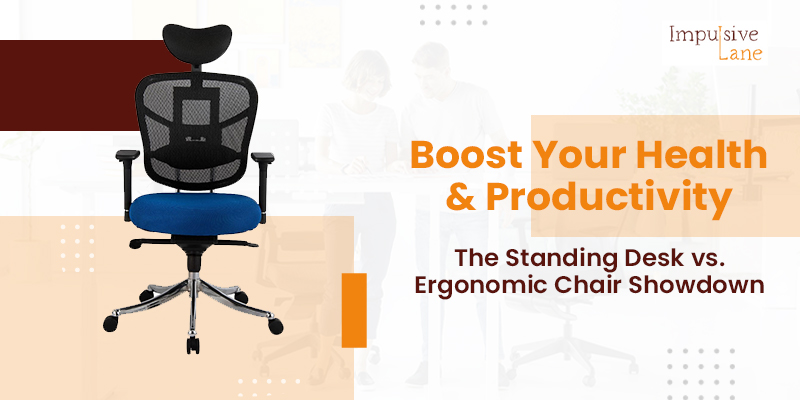Boost Your Health & Productivity: The Standing Desk vs. Ergonomic Chair Showdown

Office ergonomics have become increasingly focused in recent years as prolonged sitting becomes the norm. While searching for the best chair for studying long hours, you will find that standing desks and adjustable chairs both aim to alleviate physical strain and boost productivity, but which one is the better fit? By weighing key factors, individuals can determine the optimal configuration for their situation.
Benefits of Standing Desks:
Standing desks offer a dynamic solution for those seeking a break from prolonged sitting. Here are some key advantages:
Alleviation of Lower Back Pain: Standing desks enable dynamic movement and provide postural shifts crucial for well-being. They alleviate lower back aches linked to extended sitting.
Calorie Expenditure: Light activity through standing promotes circulation and calorie burning.
Mood Enhancement: Some report mood and focus improvements compared to stationary positions. Standing may also enhance in-person interactions through livelier body language.
Benefits of Adjustable Chairs:
Ergonomic chairs support spinal alignment and encourage balanced posture throughout long workdays or study times, making them ideal for people searching to buy a chair for medical students. Here are more reasons why they are worth considering:
Adjustability: Customisable height, depth, and angles ensure weight distribution tailored to each user's dimensions.
Comfortable sitting: Supportive materials maintain circulation and promote micro-movements to prevent stagnation.
Posture guidance: Reminder functions gently encourage occasional shifts to refresh the body. Armrest positioning protects against wrist problems.
Considerations for Choosing
The decision requires examining primary tasks, injury histories, comfort needs, and workspace factors. Standing endurance plays a role, as does occupational culture and budget. An inclusive approach incorporating elements of both solutions can optimise the setup. Stand-enabled desks paired with ergonomic seating provide alternatives that facilitate movement within a supportive, adaptable space.
Future Trends
As ergonomic understanding increases, programmable workstations may automate reminders for posture adjustments alongside real-time biomechanical tracking. Wearables could offer preventative feedback while ambient sensing adapts to environments dynamically. Integrated solutions bringing tailored mobility directly into the workflow continue emerging. For people wanting to buy a chair for medical students, the future holds options with which they can prioritise both wellness and productivity long-term. With awareness and a balanced strategy, workplaces can evolve proactively for collective benefit. Overall, workspace health remains a cooperative pursuit.
Bottom Line
In the perpetual debate of standing desks vs. ergonomic chairs, businesses and individuals should carefully evaluate their preferences, comfort needs, workspace constraints, and budget. Striking the right balance—perhaps incorporating elements of both solutions—can lead to a healthier, more productive work environment. Want the best chair for studying long hours?
Connect with us at Impulsive Lane right away!











The information below is required for social login
Sign In
Create New Account